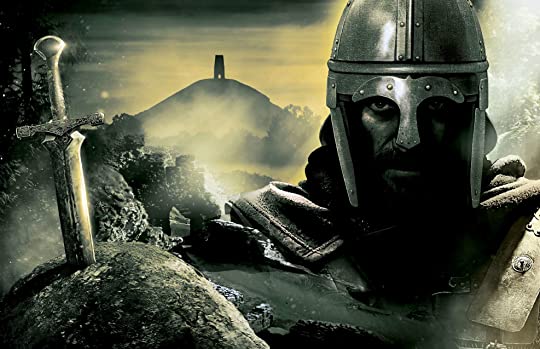“Once upon a time, in Britain, this happened”
To most readers, Arthurian mythology is easily identifiable. Tales of the fabled king, his knights and his consorts revolve around famous characters (such as Lancelot, Guinevere, Percival etc.) and tropes (such as Excalibur, the Holy Grail et al) that have evolved over the passage of time. In the modern era, the legend of Camelot represents a period of glamour and decline. The analogy often made between Camelot and the Kennedy White House, inspired largely by E.B White and the eponymous Lerner and Lowe musical, congeals with the myth that what Time Magazine called “the American Century” began to faltered after the assassination of a beloved. youthful leader. This follows the notion that scribes have always adapted tales of Arthur and his minions to reflect their eras. Early mentions of Arthur in British chronicles, culminating in Thomas Mallory’s version, emphasize the origins of a romantic form of British Christian folk tradition.
As to be expected, a cottage industry has evolved attempting to connect the legends of Arthurs’ Round Table to lost historical facts. A few novelists, such as Mary Stewart, have also minimized the presence of magic and metaphysics in Camelot stories in order to modernize the period romance, a genre whose origins we associate with Sir Walter Scott. Bernard Cornwell’s The Winter King, the first of a trilogy of novels marketed as The Warlord Chronicles, continues and expands this tradition, preserving the tragic qualities of modern Arthurian narratives while integrating more historical grit into the proceedings. Rejecting the notion that the Arthurian Britain of the late 5th Century was a lost golden age, Cornwell defines the era as one plagued by constant military, political and religious conflict. English sovereigns and their knights battle not only Saxon or other Highland or Irish invaders but each other. Christian priests broker political deals between kingdoms while challenging myriads of indigenous cults, as well as military cults lingering after the Roman retreat. These larger conflicts are reflected in the contradictory impulses and shifting alliances of the book’s main characters, and the consequences of those actions give shape to Arthurs’ actions being transformed into national myth.
Arthur, in Cornwell’s chronicle, comes off as a cross between Dwight D. Eisenhower and Al Sweringen. Citing the lack of a known king with the celebrated name, the author posits that Arthur was probably a general more renowned by his contemporaries for accomplishments on the battlefield than for chivalric codes of leadership. A skilled tactician on the fields of combat, he defers larger strategic initiatives to the wards of Mordred, the infant king of Dumnonia (now known as Somerset). While many other commanders, like Owain, use war as an opportunity for gaining wealth, Arthur envisions it as an organic extension of Anglo Saxon society. As he tells Derfel Cadarn, his acolyte and future chronicler, the soldier only exists and as extension of the blacksmith who make his weapons and armor and the farmer who grows his food. Arthur defines his identity as a relationship between his role and what that means to the civilian community.
And yet, Arthur struggles with that role as his grand passion for Guinevere severs a delicate alliance of kingdoms united to withstand foreign invasions. The inconsistency of his actions, standing in contrast to his ideological far-sightedness and ability to win the hearts and minds of men, propels the novel’s dramatic action, turning the protagonist into a tragic figure whose failures and inspiration forge the imaginary history of his nation.
Besides detailing the role of war and the civic architecture of pre feudalistic governance, Cornwell outlines the nature of religious conflict as Christianity establishes a foothold in Britain at the Roman Empire’s retreat. Merlin, and his apprentice, the half-mad gamin waif Nimoe, seek to bring paganism back to the island as Roman Catholic priests insinuate themselves as royal consorts. Their gods act and behave in accordance to the vicariousness of human nature, and bestow success, like J’s conception of Yahweh, upon those whose character reflects their own volatile temperament. Seeking to revive a spiritual resurgence of nationalism, they try to wield Arthur as an instrument for that design. Of course, The mercurial nature of the warlord’s passions throws obstacles in that scheme, ultimately testing their alliance. Their passages speak to an occult history not often immediately addressed in Arthurian mythology but that emerges in British/Celtic decorative art (as in Roslyn Chapel, as featured in The Da Vinci Code) and legend.
But why this qualifies as Solute Canon material, folks, is for the quantity of ownage that Cornwell conveys. Whether it involves sustaining or breaking shield walls or beholding the fearsome awesomeness of naked, screaking teenage girls terrify pillaging Welshman by tying bats to their hair, one gets captivated by the sheer spectacle of destroying one’s enemies via the unmitigated deployment of horror and bloodshed. Side trips to what is now Mont St. Michel in Brittany and an island of the insane in Ireland also liven up the proceedings. Like all Arthur legends, The Winter King serves as a testament to the imagination, but as opposed to utilizing fantastical magic and majestical codes of chivalry for our beguilement, Cornwell adds historical and sociological specificity to a world of weirdness and cruelty, concocting an epic of immense scale that is both thoughtful, exciting and hugely entertaining.
The Solute Book Club – easy to join! Just read The Winter King by Bernard Cornwell and come back for a discussion article on January 31st.


